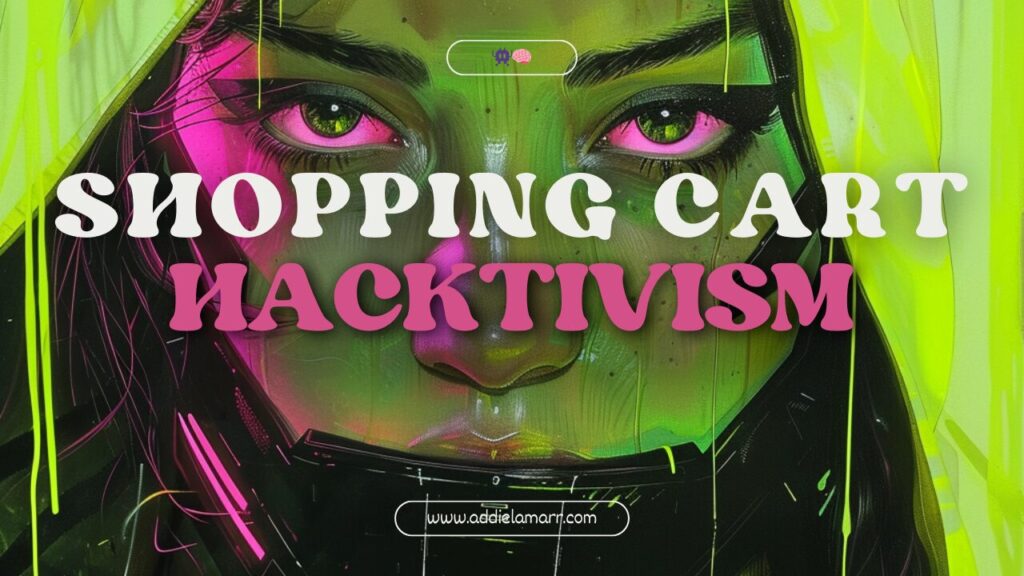Shopping Cart Hacktivism
The era of passive boycotts is over. Traditional “don’t spend a dime” tactics are just the baseline—now, it’s time to weaponize corporate surveillance tools against the surveillance state itself.
Let’s turn predictive analytics into predictive chaos. Here’s how we can exponentially escalate the financial pain for companies like Target, using their own algorithms as a weapon.
The Problem: Corporations Profit from Your Data
Target’s infamous predictive analytics famously identifies pregnant customers by tracking purchases like prenatal vitamins and unscented lotion. Once flagged, these customers are bombarded with ads to lock in loyalty during a high-spending life phase. This “customer acquisition cost” (CAC) is a goldmine for corporations—and a vulnerability we can exploit.
Boycotts have already cost Target >$15.7 billion in lost revenue. But to truly break their system, we need to attack their operating expenses, marketing budgets, and inventory algorithms—legally.
The Strategy: Multi-Layered Algorithmic Sabotage

1. Shopping Cart Hacktivism: Data Poisoning 101
- Fill your cart with absurd, mismatched, and undesirable items (e.g., pregnancy tests + lawn gnomes + dog food). This will trick their inventory into thinking these products are popular and they need to increase inventory. Algorithms detect patterns—so create noise. It will also make them think you intend on dropping tons of money. They’ll be more incentivized to retarget you.
- Trigger “high-value” flags: If safe in your region, mimic purchases associated with pregnancy (cribs, storage bins, prenatal vitamins, unscented lotions). For those in restrictive areas, simulate a “move” (boxes, cleaning supplies, cheap furniture). This will trick the algorithms into thinking you’re a member of a ultra-high CAC segment and they’ll spend even more retargeting you.
- Abandon carts at checkout: Enter shipping details but stop before payment. Leave the window open for several days. This forces Target to waste tons of ad dollars “retargeting” you with discounts and emails.
Why it works: Every fake “high-value” profile costs Target up to $1,000 in CAC. Multiply this by thousands of participants, and their marketing budget bleeds dry.
2. Inventory Chaos
By inflating demand for unwanted products (e.g., neon fanny packs, nasty snacks), we trick Target into overstocking junk. Their supply chain will hemorrhage cash on dead-weight inventory.
3. Data Pollution at Scale
Gen Z already excels at “data poisoning”—flooding systems like ICE tip lines or corporate surveys with garbage inputs. Apply this to retail:
- Use fake accounts to spam wishlists with nonsense items.
- Overwhelm customer service chatbots with irrelevant queries.
- Leave absurd product reviews (“This toaster burns everything!”).
Defense-in-Depth Protesting

Cybersecurity’s “defense-in-depth” principle applies here: layer attacks to overwhelm the system. Combine boycotts with:
- Financial hits: Lost sales.
- Operational hits: Wasted marketing $$ and mismanaged inventory.
- Reputational hits: Social media campaigns mocking Target’s algorithmic blunders.
The Goal: Quarterly Earnings Apocalypse
Target’s next earnings call is in March. If we scale this strategy now, we can:
- Crush revenue through boycotts.
- Inflate costs via algorithmic sabotage.
- Trigger investor panic as profit margins implode.
Join the Algorithmic Resistance
This isn’t just about Target—it’s a blueprint for fighting any corporate giant. No coding skills or protest signs needed. Just:
- Be a fucking brat: Waste their time, money, and data.
- Be loud about it: Share what you’re doing on social media so more people know about it.
- Stay safe: Use VPNs, throwaway emails, and prepaid cards if needed. Make sure you don’t make the algorithms think you’re pregnant if you’re in a place where you could get into trouble for it.
The tech bro oligarchy built a surveillance machine. Let’s shove a shopping cart into its gears.
TL;DR: Don’t just boycott—hacktivate. Let’s turn their algorithms into their biggest liability.



